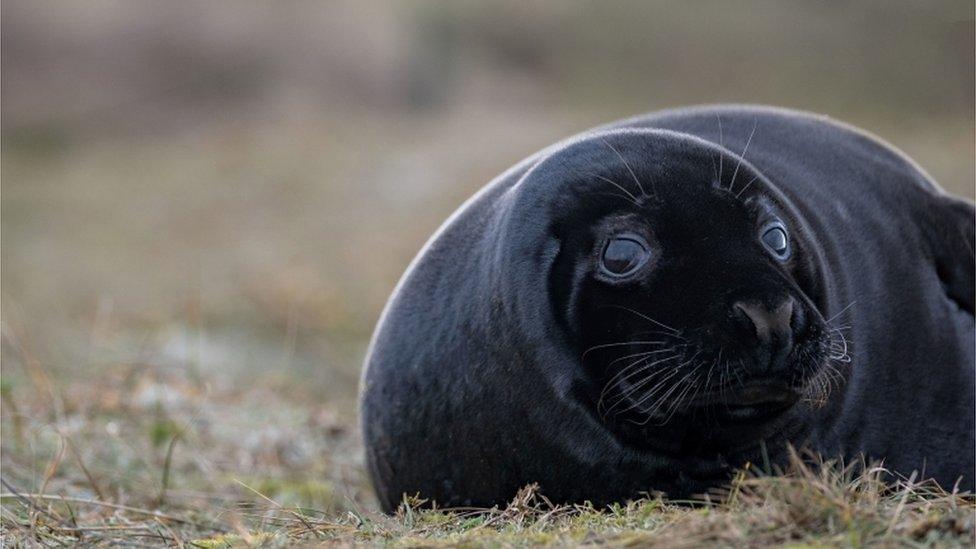Wildlife conservation: Rare black seal pups found in England's largest colony
- Published
- comments

These black seals are grey seals with more melanin in their coats
Wardens keeping an eye on England's largest grey seal colony have spotted 10 rare black-coloured seal pups among them.
Rangers saw the pups over the course of the winter in the grey seal colony on the Norfolk coast.
Grey seals are born white, shedding their fur at about two to three weeks old to expose a grey coat underneath.
But around one in 400 grey seals have a velvety black coat instead, which is revealed when they moult or lose their white fur.
Most seals in the colony are grey, but some are black
These rare seals are called melanistic seals - with melanism being the increased development of the dark-coloured pigment, melanin.
The colony at the National Trust's Blakeney National Nature Reserve in Norfolk is expected to see a record 4,000 new seal pups this season.
Grey seals are actually born covered in white fur, which they shed after a few weeks
Numbers have grown to such an extent in recent years that rangers have had to rethink the way they count the seals born at the breeding ground.
Instead of counting them all individually, they will be counted in one area to give an indication of what is happening across the colony.
Rangers do an annual count to see how many seals are in the colony each year
Due to the density of the colony, the National Trust has deemed it unsafe to walk through it, both for staff and for the seals.
The first grey seal pup was spotted at the nature reserve in 1988 and since then it has grown to be England's biggest colony for the marine mammals, with numbers increasing from 25 youngsters born in 2001 to 3,399 pups in 2019.
This season's seal count is ongoing.
- Published19 January 2021
- Published18 January 2023
- Published19 January 2021
